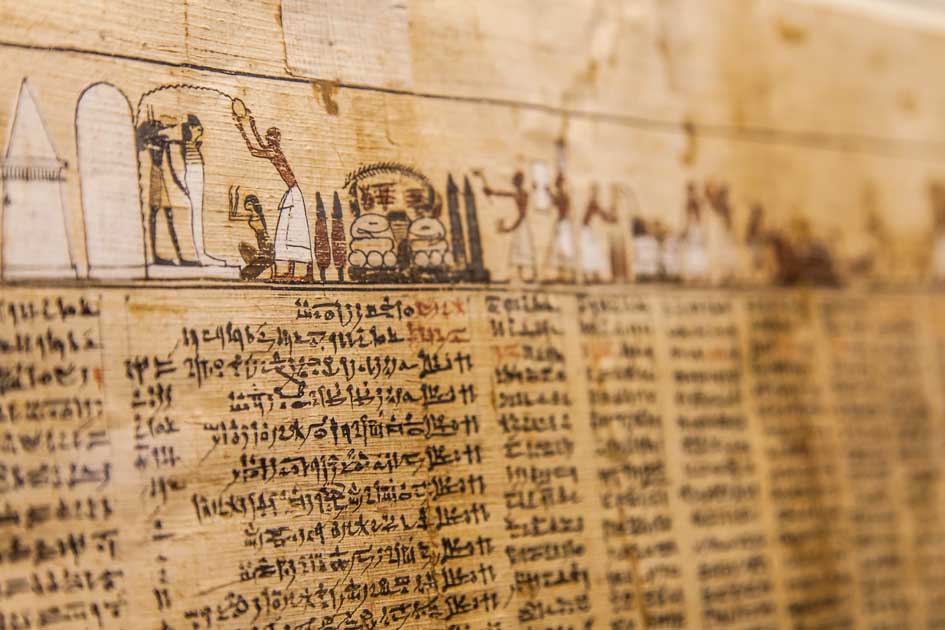

Indeed, are violent, pestilence is throughout the land, blood is everywhere, death is not lacking, and the mummy-cloth speaks even before one comes near it. Indeed, men’s slaves, their hearts are sad, and magistrates do not fraternize with their people when they shout. Indeed, poor men have become owners of wealth, and he who could not make sandals for himself is now a possessor of riches. Khnum fashions (men) no more because of the condition of the land. Indeed, the women are barren and none conceive. Everyone says: “We do not know what will happen throughout the land.” Indeed, the Nile overflows, yet none plough for it. Indeed, the plunderer everywhere, and the servant takes what he finds. Indeed, is pale the bowman is ready, wrongdoing is everywhere, and there is no man of yesterday. Indeed, the meek say: face is as a well-born man.”
#Ipuwer papyrus water turn to blood full#
Indeed, the face is pale what the ancestors foretold has arrived at the land is full of confederates, and a man goes to plough with his shield. The virtuous man goes in mourning because of what has happened in the land goes the tribes of the desert have become Egyptians everywhere. Come and conquer judge what was ordained for you in the time of Horus, in the age. The bird have drawn up in line of battle of the Delta carry shields.Ī man regards his son as his enemy. Lacunae in the papyrus text are marked by. Ipuwer is generally supposed to have lived during the Middle Kingdom or the Second Intermediate Period, and the catastrophes he bewails to have taken place four centuries earlier during the First Intermediate Period. The surviving papyrus ( Papyrus Leiden 334) itself is a copy made during the New Kingdom. It is impossible to give a date for the composition of this document. Below are excerpts from the papyrus together with their parallels in the Book of Exodus.

The papyrus was written by an Egyptian named Ipuwer and appears to be an eyewitness account of the effects of the Exodus plagues from the perspective of an average Egyptian. The papyrus describes violent upheavals in Egypt, starvation, drought, escape of slaves (with the wealth of the Egyptians), and death throughout the land. The complete papyrus can be found in the book Admonitions of an Egyptian from a heiratic papyrus in Leiden. It was taken to the Leiden Museum in Holland and interpreted by A.H. In the early 19th Century a papyrus, dating from the end of the Middle Kingdom, was found in Egypt. Ipuwer Papyrus, officially Papyrus Leiden I 344 recto


 0 kommentar(er)
0 kommentar(er)
